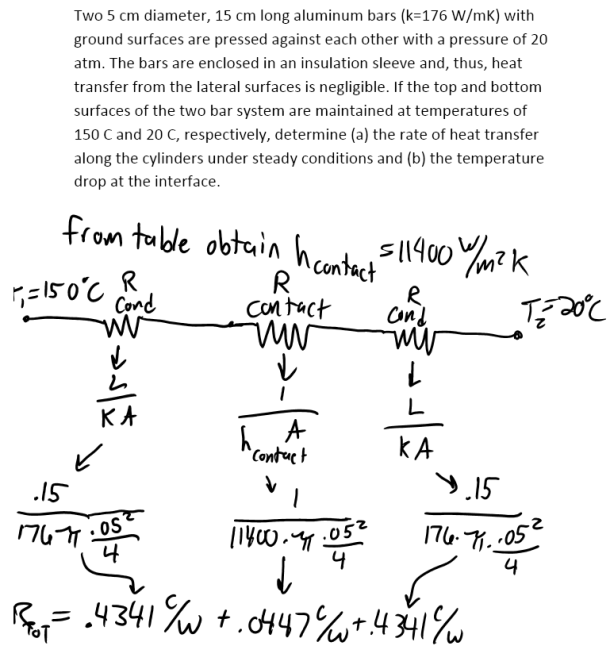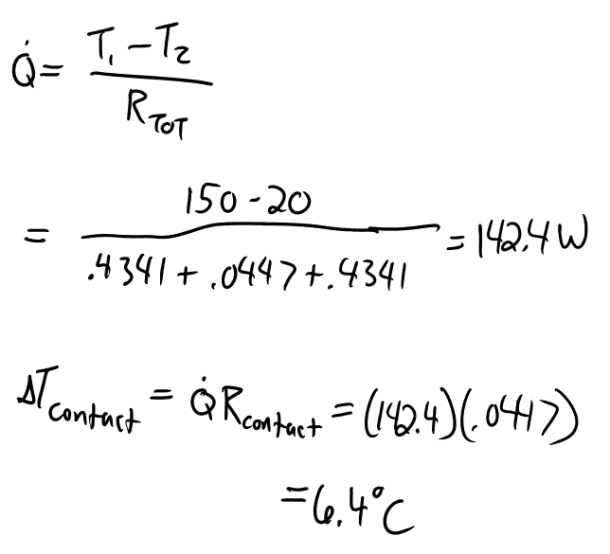Two 5 cm diameter, 15 cm long aluminum bars (k=176 W/mK) with ground surfaces are pressed against each other with a pressure of 20 atm. The bars are enclosed in an insulation sleeve and, thus, heat transfer from the lateral surfaces is negligible. If the top and bottom surfaces of the two bar system are maintained at temperatures of 150 C and 20 C, respectively, determine (a) the rate of heat transfer along the cylinders under steady conditions and (b) the temperature drop at the interface.


Two 5 cm diameter, 15 cm long aluminum bars (k=176 W/mK) with ground surfaces are pressed against each other with a pressure of 20 atm. The bars are enclosed in an insulation sleeve and, thus, heat transfer from the lateral surfaces is negligible. If the top and bottom surfaces of the two bar system are maintained at temperatures of 150 C and 20 C, respectively, determine (a) the rate of heat transfer along the cylinders under steady conditions and (b) the temperature drop at the interface.

